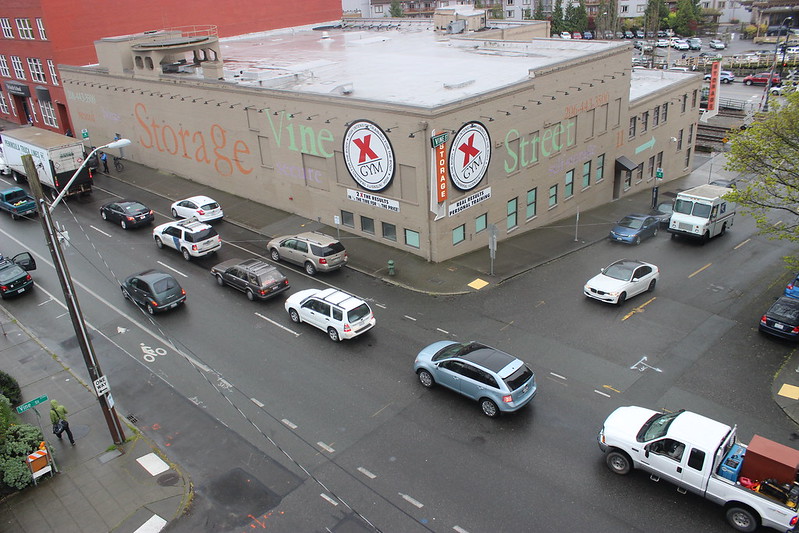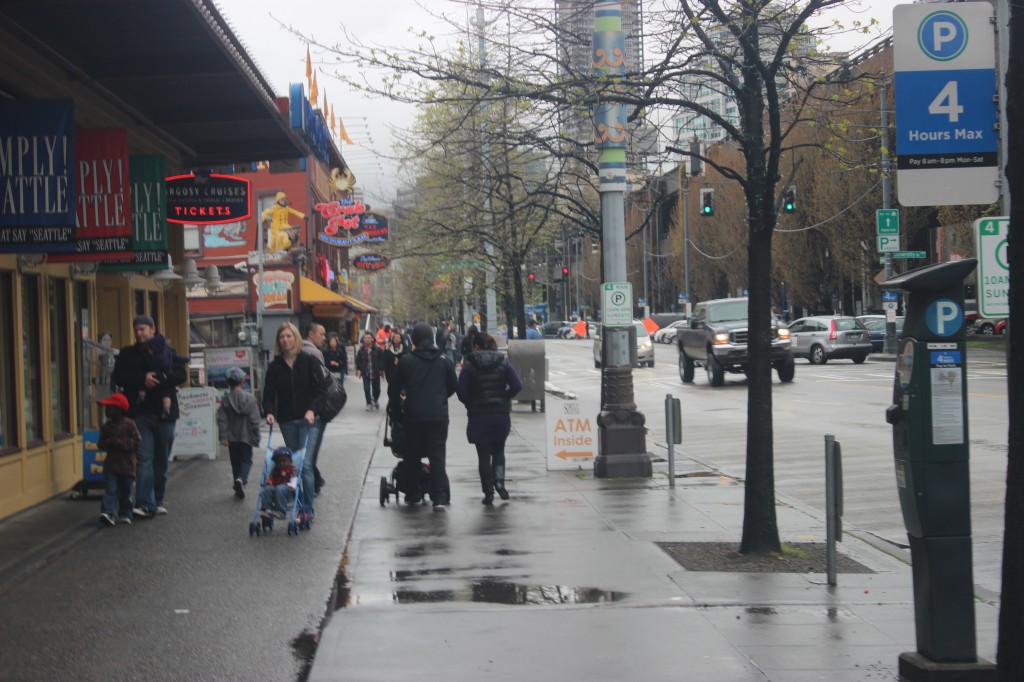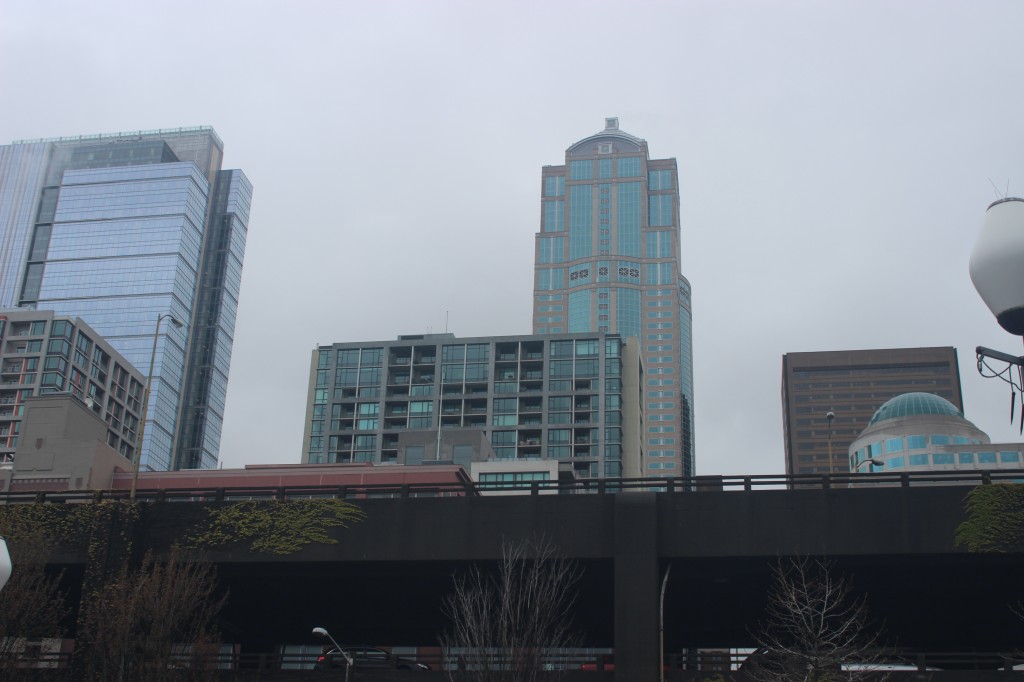When it comes to sharing the idea of how important the outdoors is as a domestic space it is crucial to show the opposite of that space. To show the place that people want to escape.
In the film I need to show this in a negative matter. Use my shot composition to create the feeling of this space being ultimately the enemy in my film.
A wet drab day in Seattle can sometimes create this feeling with little to no effort required. The city itself can be lonely even though you are packed together with people, these people may still be strangers. The city much like the woods is filled with life. In the forest this life is contained in the plants and animals that call it home. While in the city the life is within the people and machines.
The shots that I have taken today will play a very small roll in finished product of my film. These will go by fast, but it is important to have them in the film. As many of my interviews thus far have talked about this need to “escape” the hustle, the technology and the world. By showcasing these few shots it will take the audience to the place that the stories talk about.
The ability I have to get these shots early on in the process is contributed to having created a shot list. The sequence I will edit these shots into will probably not be made until the end of my schedule. Being able to go and acquire these different shots when I have the chance, rather than scrambling to create a sequence at the last minute will better allow my vision to take the front seat in this project.




